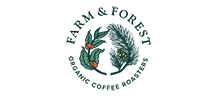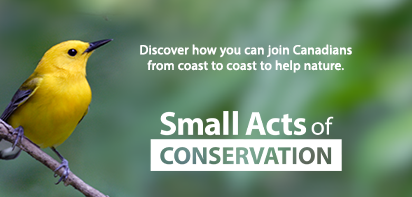Important habitat for fish in Heart of the Fraser now conserved
New conservation area protects sensitive spawning habitat for salmon and white sturgeon
British Columbia’s iconic salmon now have more protected spawning habitat in the lower Fraser River, thanks to the Nature Conservancy of Canada’s (NCC’s) conservation acquisition of Carey Island. Located near Chilliwack, in an ecologically important area known as the Heart of the Fraser, Carey Island and its gravel channels offer calm and crucial spawning and rearing habitat for the river’s fish and aquatic species.
NCC raised the necessary funds to purchase the 248-hectare island, with funding contributions from Environment and Climate Change Canada, through the Canada Nature Fund, the Fish and Wildlife Compensation Program, Sitka Foundation, Aqueduct Foundation, Collings Stevens Family Foundation, Rudy North and numerous other individual and anonymous donors.
Diking, ditching and other modifications have altered more than 90 per cent of the Fraser River's shoreline between Hope and the Salish Sea, leaving very little natural and undisturbed habitat for fish and other aquatic species that rely on the river for some or all of their life cycle.
Carey Island is one of the few remaining privately held lands in the region that has not been diked, allowing its side channels and gravel bars to fill with water during the spring snowmelt. Chinook, pink and sockeye salmon have all been documented in the channels around and through Carey Island. These gravel beds are also some of the most important spawning habitat for the threatened white sturgeon.
As the most populous region in BC, the Lower Mainland is under immense pressure from development. Carey Island itself has a recent history of small-scale farming, though pockets of mature cedar and Douglas-fir remain. Conserving this island will prevent further land conversion and ensure that the shorelines remain intact for the many species that rely on these habitats.
The conservation of Carey Island has long been a priority for supporters of the lower Fraser River’s salmon runs, with groups like the Heart of the Fraser coalition advocating for its protection. The Pelólxw Tribe, which includes the Cheam, Skwá and Kwaw-kwaw-a-pilt First Nations, is actively working to restore the resilience of aquatic habitat within this stretch of the Lower Fraser. NCC is exploring opportunities to collaborate with the Pelólxw Tribe in support of their vision for stewardship of the area, which prioritizes both ecological and cultural values.
Quotes
“Carey Island is the Nature Conservancy of Canada’s first project in the lower Fraser River, and it is an incredible opportunity to support salmon and other wildlife that rely on this ecosystem. The Fraser is such an iconic river in BC, and we’re really excited to be able to contribute to the ongoing work and vision to protect fish habitat in this important region.”
– Steven Godfrey, West Coast Program Director, Nature Conservancy of Canada
“British Columbia’s iconic salmon now have crucial spawning habitat safeguarded in the lower Fraser River, thanks to the protection of 248 hectares of island and riverbed habitat! Carey Island, located in the Heart of the Fraser, provides essential calm gravel channels for spawning and rearing and helps protect species at risk, like the White Sturgeon. These investments through the Canada Nature Fund, working with the Nature Conservancy of Canada, are part of our national conservation campaign to protect 30 percent of land and water in Canada by 2030.”
– The Honourable Steven Guilbeault, Minister of Environment and Climate Change
“We, the Pelólxw People, are moving forward to fulfill our stewardship duties and responsibilities to restore, conserve and preserve this area of our traditional territory, revitalize our Halq’emeylem language and live our culture. In the spirit of reconciliation, we have a golden opportunity to collaborate with others to undertake this work for the benefit of current and future generations in honour of our ancestors.”
– Eddie Gardner, T’it’elem Spath, Pelólxw representative for the Gill Bar project with the S’ólh téméxw Stewardship Alliance
“The acquisition of Carey Island by the NCC is a major step forward in efforts to better protect the Heart of the Fraser, one of the most productive stretches of river on the planet. The island has an abundance of natural values while also providing increasingly rare habitat for vast numbers of young salmon that move into the wetted portions of the island each spring seeking refuge from high flows. While the Fraser faces immense development pressures, the conservation of Carey Island is very good news indeed for the river and the many salmon and sturgeon it sustains. Congratulations to the NCC and all the supporters who made today’s announcement possible.”
– Mark Angelo, World Rivers Day Founder
Facts
- The Carey Island Conservation Area protects 248 hectares of land and seasonally flooded side channels.
- The Fraser River is the longest river in BC, flowing 1,375 kilometres from the Rocky Mountains in the east to where it meets the ocean just south of Vancouver.
- The section of the Fraser River between Mission and Hope is known as the Heart of the Fraser because of its exceptional salmon and sturgeon spawning habitat. This flatter section of river winds through a network of islands and channels, collecting rocks, sand and silt that are swept downstream from the high mountainous regions to the east.
- The gravelly base provides exceptional spawning habitat, while the slower-moving waters create a refuge for juvenile fish from the faster-moving waters of the river’s mainstem.
- Pacific salmon are keystone species and play an essential role in enriching the health of ecosystems. They are an important nutrient-rich food source for more than 130 other species like bear, wolf, eagle, killer whale and even humans. When the fish die during spawning, they release these nutrients into the fresheater system.
- The lower Fraser River population of white sturgeon is listed as threated by the Committee on the Status of Endangered Wildlife in Canada. This species is the largest and longest-living species of freshwater fish in North America, reaching lengths of more than six metres and living more than 100 years.
Images
About
The Nature Conservancy of Canada (NCC) is the country’s unifying force for nature. NCC seeks solutions to the twin crises of rapid biodiversity loss and climate change through large-scale, permanent land conservation. As a trusted partner, NCC works with people, communities, businesses, and government to protect and care for our country’s natural areas. Since 1962, NCC has brought Canadians together to conserve and restore more than 15 million hectares. To learn more, visit natureconservancy.ca.
Learn More
Follow us on on X (formerly Twitter): x.com/NCC_CNC | x.com/NCC_CNCMedia
Find us on Facebook
- 30 -




